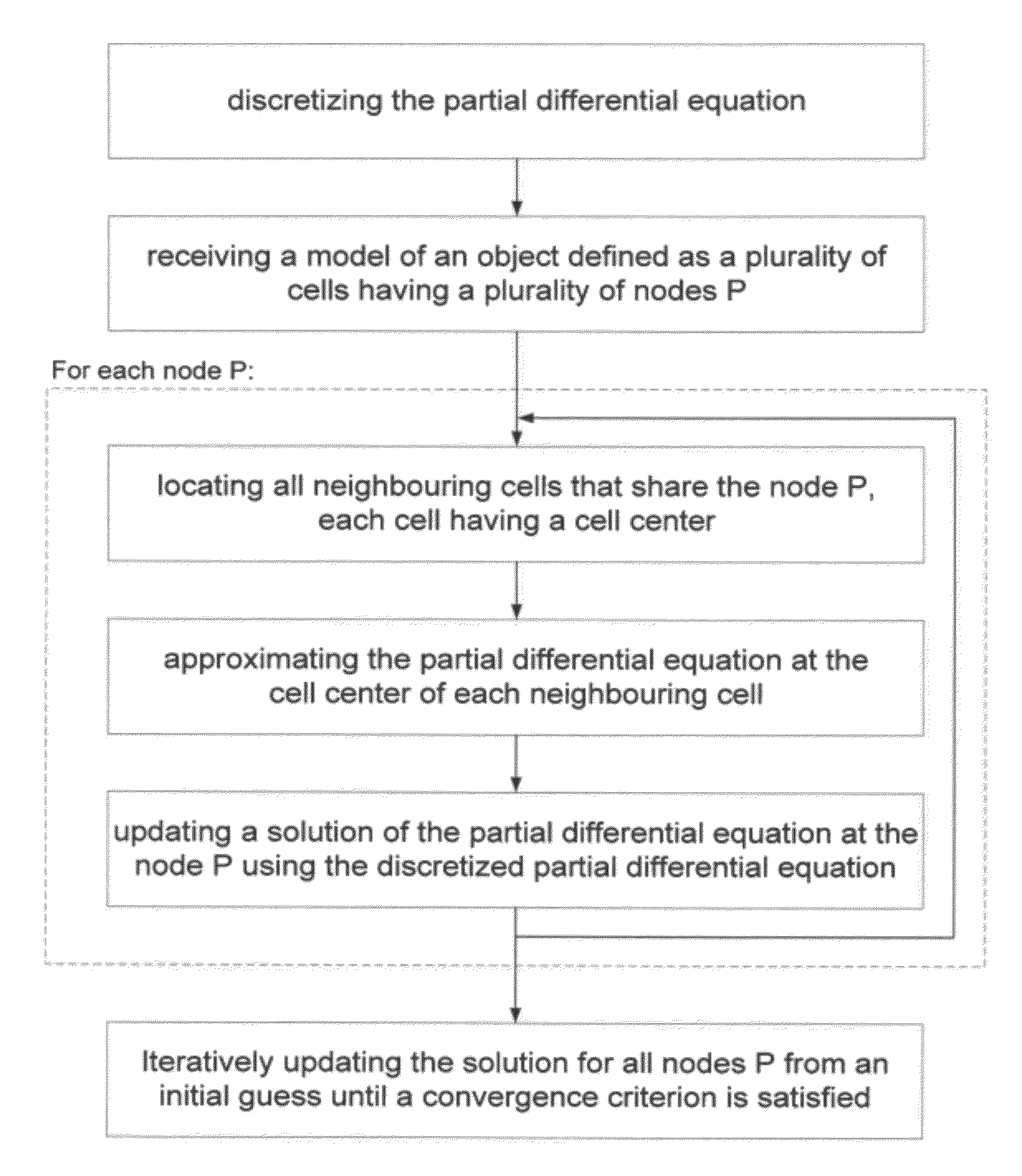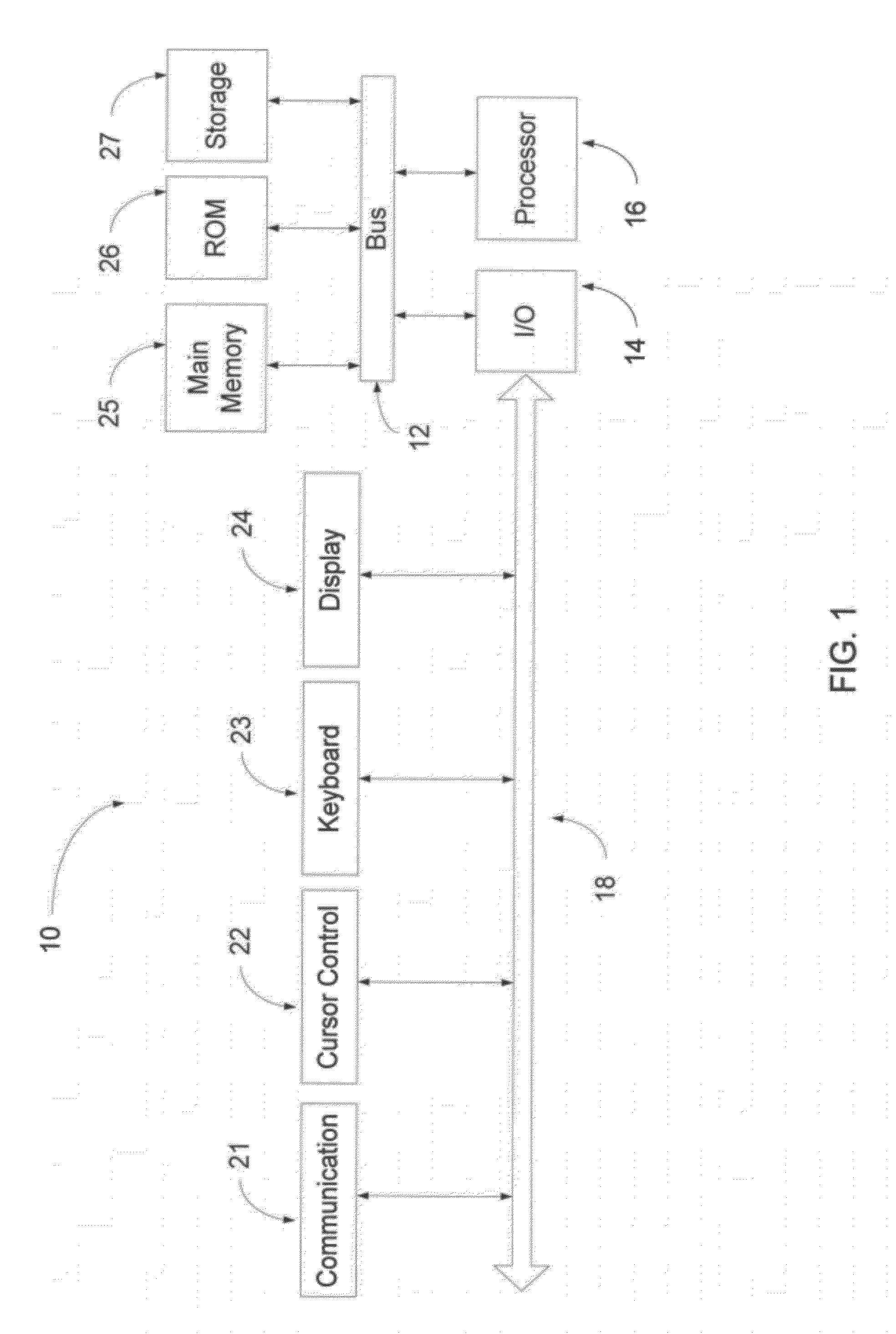System and Method for Determining Fluid Flow of Compressible and Non-Compressible Liquids
- Summary
- Abstract
- Description
- Claims
- Application Information
AI Technical Summary
Benefits of technology
Problems solved by technology
Method used
Image
Examples
embodiment # 1
Embodiment #1
Compressible Fluids
[0042]In a preferred embodiment, computer system 10 is used in conjunction with to model the fluid dynamics of an aircraft landing gear through the air, such as during aircraft landing and in flight. In use of the system 10, a computer-aided designed (CAD) representation of the aircraft landing gear and supporting structure is inserted into the model.
[0043]Airflow, as a compressible fluid, may be constrained by initial conditions entered as part of the model or taken from sensors from real-world applications. The airflow may be modeled as a partial differential equation, as known in the art of fluid dynamics. For example, data from temperature and speed sensors may be included in the model, taken from real-world applications.
[0044]Once the boundary conditions and initial conditions have been inputted, the profile is input into the system 10 of the present invention and when the solution converges to a steady state, the solution is outputted. The solut...
embodiment # 2
Embodiment #2
Non-Compressible Fluids
[0047]The above-described computer system 10 can also be used to model the fluid dynamics of a non-compressible fluid through a defined space. For example, in a preferred embodiment, the computer system 10 can model a fluid such as water through a pipe or other transport mechanism.
[0048]As with the compressible embodiment, described above, a computer-aided designed (CAD) representation of the pipe is inserted into the simulation. Typical boundary conditions may be represented in the model.
[0049]The system 10 then models the flow of the non-compressible fluid, i.e. water or gas, through the pipe in successive stages. The non-compressible fluid may be further defined by its initial conditions or parameters. For example, the non-compressible fluid may include particulate matter and have a specific viscosity. The non-compressible fluid may be constrained by initial conditions entered as part of the computer simulation or taken from sensors from real-w...
examples
[0087]FIGS. 7A to 7D, 8A, 8B and 9A to 9C illustrate graphically first example test cases with uniform structured mesh, clustered structured mesh, unstructured triangulated mesh, and unstructured refined mesh, as well as comparisons between the CCFDM solution, FEM and exact solutions.
[0088]In FIGS. 7A to 7D, a sample test case using the Laplace equation on a unit square with Dirichlet boundary conditions is illustrated. The Laplace equation for the sample test is described according to the following equations:
∂2T∂x2+∂2T∂y2=0;∀(x,y)∈(0,0)×(1,1)T(x,0)=T(x,1)=T(1,y)=0,T(0,y)=1
[0089]Different meshes are shown for the unit square. In FIG. 7A, a uniform structured mesh is shown. In FIG. 7B, a clustered structured mesh is shown. In FIG. 7C, an unstructured (triangulated) mesh is shown. In FIG. 7D, an unstructured refined mesh is shown.
[0090]FIG. 8A shows the CCFDM solution to the sample test case using the Laplace equation on a unit square, in accordance with an embodiment of the present i...
PUM
 Login to View More
Login to View More Abstract
Description
Claims
Application Information
 Login to View More
Login to View More - R&D Engineer
- R&D Manager
- IP Professional
- Industry Leading Data Capabilities
- Powerful AI technology
- Patent DNA Extraction
Browse by: Latest US Patents, China's latest patents, Technical Efficacy Thesaurus, Application Domain, Technology Topic, Popular Technical Reports.
© 2024 PatSnap. All rights reserved.Legal|Privacy policy|Modern Slavery Act Transparency Statement|Sitemap|About US| Contact US: help@patsnap.com










